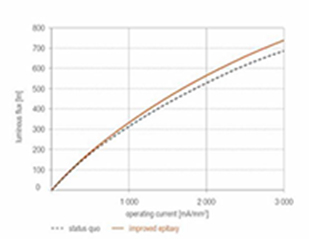- Abracon
- Adam Tech
- Aerospace, Defense & Marine
- Agastat
- AIC
- AKM Semiconductor
- Alcoswitch
- Allegro
- Alps Electric
- Altera
- AMI Semiconductor
- AMP
- ams
- Analog Devices (ADI)
- Aptina Imaging
- Atmel
- Avago / Broadcom
- AVX
- Axicom
- Bccomponents
- Beyschlag
- BI Technologies
- Bourns Inc.
- Bowei Integrated Circuits
- Bridgelux
- Buchanan
- California Micro Devices
- Catalyst Semiconductor
- CGS
- Cirrus Logic
- Citizen Electronics
- CML Microcircuits
- Coiltronics
- Cooper Bussmann
- Corcom
- Core Logic
- Cree
- CSR PLC
- CTS
- Cypress Semiconductor
- Dale
- Data Image
- Deutsch
- Diodes Incorporated
- DOMINANT Opto Technologies
- E-T-A
- Eaton
- ECS
- Edison Opto
- Elcon
- EPCOS
- Epistar
- Epson
- Everlight Electronics
- Exar
- Fairchild Semiconductor
- FCI
- Freescale Semiconductor
- Fremont Micro Devices (FMD)
- Fujitsu Semiconductor
- Fulltech Electric
- General Semiconductor
- Harvatek
- Holsworthy
- Hsuan Mao Technology
- IDT
- Infineon Technologies
- Innolux
- International Rectifier (IR)
- Intersil
- IRC
- ISSI
- IXYS-IC
- Jing Cheng Electronical
- JL World
- Johanson Dielectrics
- Johanson Technology
- JRC / NJR
- JST
- KEC
- Kilovac
- Kingbright
- Kyocera Industrial Ceramics
- LEDiL
- Linear Technology / ADI
- Lite-On Technology
- Littelfuse
- Lumex
- Lumileds
- Luminary Micro
- Luminus Devices
- Macronix
- Maojwei / ZJPT
- Maxim Integrated
- MCC
- Mean Well Enterprises
- Microchip Technology
- Micron
- Microsemi
- Mini-Circuits
- Molex
- Murata Manufacturing
- Murata Power Solutions
- MWT
- National Semiconductor
- Nichicon
- Nippon Chemi-Con
- NJR / JRC
- NVE
- NXP Semiconductors
- OEG
- Omnivision
- ON Semiconductor
- Optek Technology
- Optrex
- OSRAM Opto Semiconductors
- OTAX
- Panasonic
- Peregrine(pSemi)
- Potter & Brumfield
- Power Integrations
- PowerStor
- Preci-Dip
- Prewell
- Products Unlimited
- Pulse Electronics
- PulseCore Semiconductor
- Qorvo
- Raychem
- Renesas Electronics
- RFMD
- Richtek Technology
- ROHM Semiconductor
- Rubycon
- Samsung Electro-Mechanics
- Samsung Semiconductor
- Schaffner
- Schrack
- Seiko Instruments, Inc. (SII)
- Semtech
- Sensata
- Seoul Semiconductor
- Sfernice
- Sharp Display
- Sharp Microelectronics
- Silicon Labs
- Siliconix
- Skyworks Solutions
- SoniCrest / JL World
- Spansion
- Sprague
- Stanley Electric
- STMicroelectronics
- Sunny Electronics
- Susumu (SSM)
- Taimag
- Taiyo Yuden
- TDK
- TDK-Lambda
- TE Connectivity
- Teccor
- Texas Instruments (TI)
- Thin Film
- Tianma Micro-electronics
- TOCOS
- TOKO
- Toshiba Electronic Components
- TT Electronics
- Tusonix
- TXC
- Tyntek
- Vishay
- Vishay Precision Group
- Vitramon
- Walsin Technology
- Weidmuller
- Welwyn
- Wickmann
- Winbond
- Xilinx
- Yageo
- Zetex Semiconductors
- ZJPT / Maojwei
News
Osram increases the luminous efficacy of white and blue high-power LEDs by 7.5 percent
2016-04-12 | Return Research success at Osram Opto Semiconductors. The high-tech company has considerably improved the luminous efficacy of its high-power LEDs by reducing the unwanted droop effect at high currents. This development was made possible by optimized epitaxial processes. At a current density of 3 A/mm² the quantum efficiency of the LEDs is now a full 7.5 percent above the previous level.
Research success at Osram Opto Semiconductors. The high-tech company has considerably improved the luminous efficacy of its high-power LEDs by reducing the unwanted droop effect at high currents. This development was made possible by optimized epitaxial processes. At a current density of 3 A/mm² the quantum efficiency of the LEDs is now a full 7.5 percent above the previous level.The unwanted drop in efficiency as the current density increases, commonly referred to as “droop”, limits the maximum luminous efficacy of indium gallium nitride based light emitting diodes (LEDs) and is therefore the subject of intense research and development activities worldwide. Engineers at Osram Opto Semiconductors have now been able to reduce this effect considerably and therefore achieve a significant increase in the efficiency of the LEDs. Under laboratory conditions and at a current density of 3 A/mm² a typical luminous flux of 740 lm was verified in a QFN LED package (Quad Flat No Lead) – an improvement of around 7.5 percent compared with previous typical values (6200 K, Cx 0.319, Cy 0.323, single-chip version LDxyz). At low current densities of 0.35 A/mm² the benefit of the optimized LEDs is still around 4 percent. “We have been able to reduce the droop effect considerably by extensively revising and improving the epitaxy”, said Dr. Alexander Frey, Project Manager at the Regensburg high-tech company.
The new processes are being used in all LEDs from Osram Opto Semiconductors based on UX:3 chip technology and will also have a positive impact on other high-power products. The results will now be integrated step by step in the existing product portfolio.
Soure :http://www.osram-os.com/





